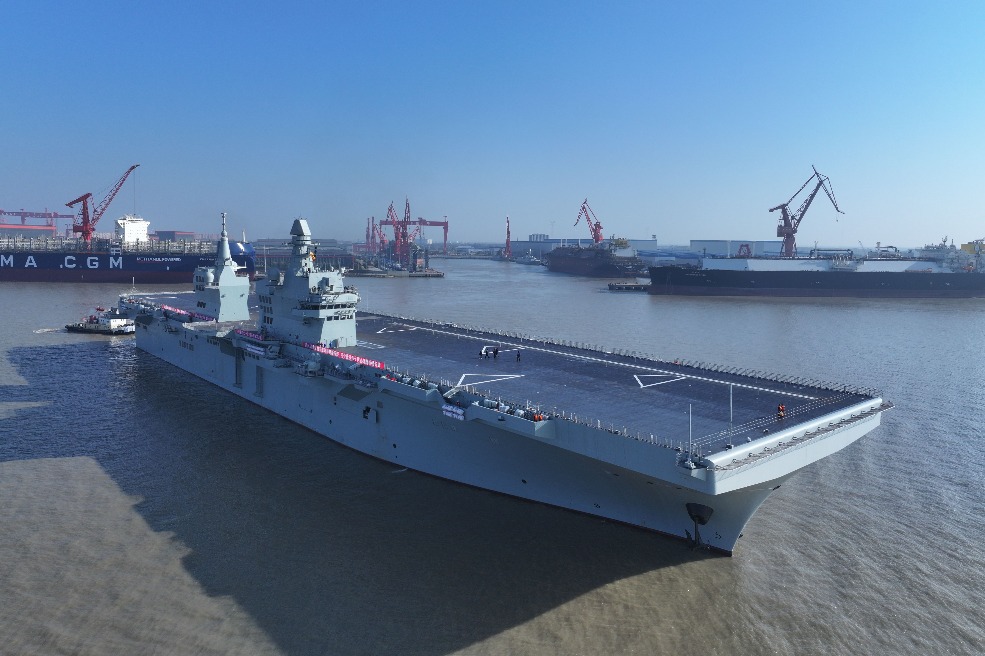Super small is beautiful for SUVs

Luxury brands must adopt green technologies to boost market share
Super-luxury sports utility vehicles (SUVs) are seldom associated with energy-saving small engines. However, changes are afoot thanks to joint efforts by the government, technology innovators and customer initiatives. Super-luxury SUVs in China are ushering in the small displacement era.
The super-luxury SUV is defined as a luxury branded SUV with an entry price above 1 million yuan (107,046 euros). This segment accounted for about 20 percent of the luxury SUVs sold in 2008, but shrank to only 10 percent in 2009 due to the financial crisis and the rise in consumption tax for heavy engines at the end of 2008.
Before 2008, all the models in the segment were equipped with engine displacements of 4-liters or above, but now only 60 percent of the sales are expected to come from this range. We believe the percentage will continue to fall in favor of smaller engines in the future.
Land Rover, Lexus and Mercedes-Benz are the key players in the segment. Of the 16,600 sales in 2010, Land Rover took a 30-percent share, followed by Mercedes-Benz and Porsche with a 19 percent and 16 percent share respectively. However, both Audi and Porsche are expected to gain market share from their competitors this year. The key to their success will be their small displacement variants. Both added 3-liter V6 variants at the end of 2010, Audi to its Q7 and Porsche to its Cayenne. The Q7 also comes in a turbo-charge engine and the Cayenne is a hybrid, which adds to their green credentials.
The substantial increase in the consumption tax rate by the Chinese government for 3-liter and above engines is the first and most direct factor to push the evolution. For the 4-liter and above vehicles, the tax rate doubled from 20 percent to 40 percent. It also rose from 15 percent to 25 percent for the engines between 3-liters and 4-liters (including 4-liter). In contrast, a 3-liter engine only has a rate of 12 percent applied. Demand was therefore largely restrained in 2009 given that OEMs were unable to adjust their product mix in time. It was also difficult for customers to accept the single leap in price.
Stricter limit on CO2 emissions by the European Union (EU) is another factor driving OEMs to adopt smaller engines. The ultimate EU target is to reach an average CO2 emission rate of 120 g/km for all new passenger cars by 2012. Not surprisingly, smaller volume manufacturers of higher emissions cars such as BMW, Mercedes-Benz, Audi and Porsche are a long way away from reaching this target, while some volume manufacturers of smaller cars such as Fiat, Renault and Peugeot-Citroen are already quite close to the target. This is why it's more urgent for luxury brands to cut their engine size and adopt new technology.
There is no doubt that advanced power train technologies have enabled OEMs to realize their plans. We find both turbo-charged and hybrid technologies widely used among super luxury SUVs in their 2011 models. The BMW X6, VW Toureg and Porsche Cayenne all added hybrid variants; Land Rover chose the cleaner diesel engine, while Audi leveraged its 3-liter turbo charged engine to output more power, replacing its 4.2-liter V8 engine. Each OEM displays its technical prowess through its fuel efficient programs, including BMW's Efficient Dynamics, Mercedes-Benz' Blue Efficiency and Volkswagen's Blue Motion. We expect the percentage of turbo-charged and hybrid engines to continue increasing in the luxury SUV segment in the coming years.
Environmentally friendly vehicles are more acceptable to customers who care about social responsibility and environmental protection. Price and lower fuel consumption are two other considerations, but not the most important. Thanks to the lower consumption tax rate for small engines, the hybrid variant is not more expensive than the variant with a larger engine. The lower power could be a concern but it is not a key factor for most customers. This could also support the long-term development of small displacement engines.
Looking forward, we believe the super luxury SUV market will continue expanding at a double-digit rate over the next four years, supported by the substantial growth of rich people and their increasingly diversified requirements. However, its share among the luxury SUVs will decrease as we believe the whole luxury SUV segment will mainly be driven by the entry level models, thanks to the rapidly rising middle class.
Meanwhile, government action will continue to push the market to be more eco-friendly and efficient vehicles through taxes or penalties. OEMs will have to continue to develop new technologies in order to meet the requirements and while customers are willing to embrace change, they will be looking for fringe benefits.
The author is a senior market
analyst at JD Power Asia Pacific.
Today's Top News
- China's Shenzhou XX crew en route back to Earth
- China's economy remains generally stable in Oct
- Xi calls for advancing community with shared future when meeting Thailand's king
- Xi holds welcome ceremony for visiting Thailand's king
- China's retail sales up 2.9% in Oct
- Shenzhou XX crew set to return after space debris delay






























